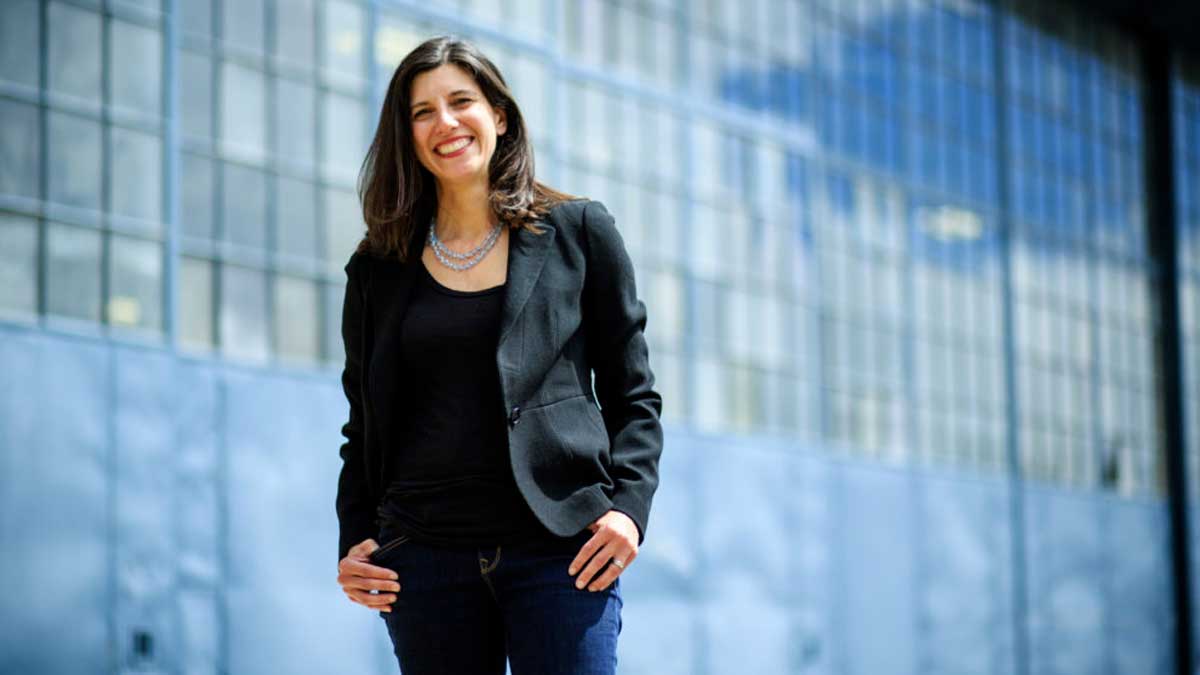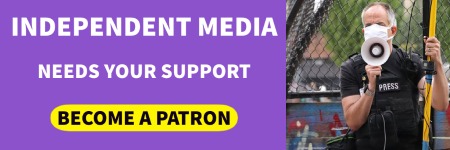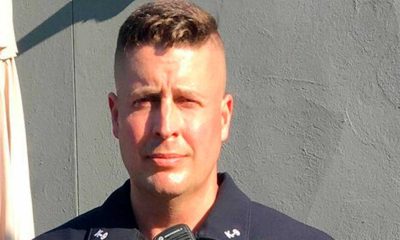Local
2021 Seattle mayoral candidate Jessyn Farrell discusses her platform
Jessyn Farrell sees opportunities to turn “anger into action” and address the challenges facing Seattle in 2021 and beyond.

[SEATTLE] – (MTN) Malcontent News is conducting a series of interviews with 2021 Seattle mayoral candidates. We have contacted, or are in the process of contacting the most viable candidates, inviting them to answer seven prepared questions. Today we feature Jessyn Farrell.
For all candidates, the first interview will be about their platform and vision. Prior to the primary election, we will conduct a second round that will focus on differentiation, and challenging positions and visions. Once the final candidates are selected in the primary, we will invite them for one last round of interviews.
All candidates for the first round will be asked the same seven questions, and have received a copy in advance. These questions were created by our editorial board, and are aligned to topics of key interest to the residents of Seattle.
Malcontent News is committed to providing equal time for all candidates, and operating under a “fairness doctrine” for all candidates.
We are publishing a transcript of each interview. Transcripts may be lightly edited to remove, umms, ahhs, pauses, and aid in readability.
JESSYN FARRELL
David Obelcz:
What is it that has you running for mayor in 2021 for Seattle?
Jessyn Farrell:
This is a really hard time for folks, whether it is the economic disruption from the COVID-19 pandemic, racial injustice. If you’re a parent like me, [who] struggles with remote learning and lack of childcare, I think that there’s this sense that we can be doing so much better as a city. We’re not tackling both the really basic things like basic service delivery, let alone the biggest problems like homelessness and climate change and housing affordability and public safety. I really think that there’s this hunger for a problem-solving leader. Who’s really willing to articulate a vision, wake up every day, and implement that vision. I am hoping to make that case to the city [on] why I am that person.
Question one – houselessness crisis
David Obelcz:
Seattle Is facing an ongoing crisis related to unharmed people’s Washington state experienced a 6.2 increase in homelessness in 2019 – 2020. King County spends over a billion dollars a year between public and private investment to support approximately 12,500 unhomed people, with disappointing results. If you were elected as mayor, how would you address this crisis? How do you think your plan provides aid in resolving this crisis, both in the short term and in the long term?
Jessyn Farrell:
I think there are three parts to that question. Number one, what is the plan? Number two, why I’m the person that can get it done, and number three, what we need to be doing above and beyond that. So I’m going to kind of take each of those things in turn. And the broad context is we’ve been in a homelessness crisis now for many years. Our leaders have not acted like that’s the case, waking up with a sense of purpose and determination and holding ourselves accountable to helping people get inside and get the services they need. So I, like many Seattleites and people across the region, are just really disappointed in the lack of progress that we’ve made. Now, the good news is I think there’s quite a bit of consensus around what it is that we need to do.
We need to be creating more interim housing options. We have learned that using hotels as a safe and stable place for people to come inside is really effective. We also know that we need to massively scale up access to mental and behavioral health services that people need. We have an opioid crisis in the state. We have a really strong state opioid prevention plan. We need to be partnering with the state to be delivering on that. Finally, not only are we needing to invest in the interim solutions, but we need to be scaling up our access to affordable housing. Generally, there is absolutely a crisis across the region, and that’s something we need to be solving for. My background is as an advocate on transit and transportation. I am a former state legislator, and I’ve delivered on those big regional solutions and to get in front of the homelessness crisis. We’re going to have to stop patting ourselves on the back for incrementalism and relentlessly focus on those particular solutions that are scaled to helping people get inside.
David Obelcz:
How does your plan differ, and how does this get us to the long term?
Jessyn Farrell:
If you look across the candidates’ plans, particularly on those interim solutions, there is a lot of consensus; but I’m going to make the case that there are really two core differences for me. Number one, part of my plan includes massively scaling up affordable housing. I’m calling it ST3 for housing. It takes its basis from the way we’ve been able to scale up regional transit infrastructure. We have a regional approach. We’re working together across three counties. We have a very significant public investment that is tied to a plan, and we’re using multimodal strategies to get people around. Similarly, in housing, we need to be scaling up housing at all income levels, very low income, all the way up through middle-class housing, and at a variety of lifecycle needs.
You know, if you’re a family, you have a different need than if you’re aging in place or if you’re a younger person. And finally, every single neighborhood across the region needs to be taking on its share of affordable housing. So that’s a core difference. And then the second core difference is, again, one of experience. I’m the candidate in this race that has accomplished large-scale regional and state solutions to our problems. I mentioned working on Sound Transit and advocating for transit. That also includes helping negotiate paid family leave and [delivering] the 2015 transportation package. So it’s that combination of being able to deliver both the consensus solutions, filling in the gaps, and then having the experience to do it.
Question two – infrastructure and economic recovery
David Obelcz:
As a result of the ongoing COVID pandemic, economic recovery and development and addressing Seattle’s crumbling transit infrastructure such as the West Seattle bridge and the Magnolia bridge [is] of great importance. Additionally, some are expressing concerns that the jobs that left downtown Seattle specifically are permanent and that workers are not going to return. So this is a three-part question. Part one, how do you plan on tackling the infrastructure issue of which it sounds like you’re passionate about. How will you stimulate economic recovery and development as we move beyond COVID? The third part is, what concern do you have about employers and workers not returning to Seattle?
Jessyn Farrell:
That’s a lot of great questions. I think what it recognizes is how important infrastructure is as a tool to spring economic recovery. I was the chair of the Governor’s task force on safe work and economic recovery. One of our core recommendations was that we need to be making major investments in infrastructure – both the safety fix projects like saving our bridges and fixing potholes – but also saving public transit in a big, dense city. We need to make sure that people have options to get around. And for those folks who are transit-dependent, continue to have that agency and freedom that transit brings. So that’s a really important piece. I would say that there are three core strategies that we need to be employing to continue to fund transit and move it into the next generation of really excellent service.
The great news is that the state is still considering a transportation investment package. And the city has to be advocating for including our bridges and transit infrastructure in that. Secondly, the Biden administration is also considering a significant infrastructure plan that matters. And then third, we have our own local tools, and we need to be stepping up and being a partner in funding and furthering our own infrastructure. I would say that it has to be tethered to our core values around equity [and] making sure that those parts of the city that have historically been left out, particularly those communities of color, have the first set of investments that matters. Secondly, climate change. Transportation is a significant driver of climate change. So we need to be lowering emissions from transportation. This idea of freedom and agency transportation should be a way to help you get to where you need to go. [For] our most vulnerable users, our youngest or oldest folks with disabilities, we need to be centering their needs. So that’s a little bit about my transportation agenda. There is a lot more on my website.
As to that second question, I think it was around downtown and what we’re going to do around downtown. Our city is so strong because we have a fantastic downtown and we have great neighborhoods, and we need to be investing in both. And obviously, there are a lot of concerns about the state of downtown right now. There are both short-term and long-run things that we need to be doing. We’ve done a great job bringing jobs downtown. And of course, now there’s some question around what’s going to happen in COVID after the pandemic, but we need to be aggressive about continuing to build housing downtown.
If you have a family like mine, there aren’t a lot of options for you to be able to live downtown. We need to treat downtown like the great neighborhood that it is. And so that means aligning the housing strategies with the job strategies. And that way, you’re able to have people downtown shopping and participating in commerce, et cetera. But that also then means you need that complete community aspect. You need schools, [and] you need open space. Those are all longer-term things. And the very near, near term, of course, people are worried about public safety. They’re worried about actually getting people downtown. Again, they’re worried about our jobs going to be coming back. And that is something that we need to be focusing on. I think one of the things we can be doing is, be a tourist in your own community as a way of getting people back downtown; downtown is open.
And part of it is that kind of “re-culturating” ourselves and changing our habits again. To being downtown for those of us who don’t live downtown and don’t go downtown every day again. But obviously, homelessness and public safety are real concerns, and those need to be addressed immediately as well. It is a crisis. It is a humanitarian crisis, and we just haven’t been acting like it. And that’s something that has impacted downtown in particular.
Question three – does Seattle have a crime and/or inequity problem
David Obelcz:
As a result of protests related to the murder of George Floyd, police violence, and ongoing racial inequality, Seattle has earned a reputation as crime written, dirty and unsafe. At one point, the city was labeled an anarchist jurisdiction by the previous Presidential administration. Do you agree with that view? What do you think will shift perceptions, and how do you address racial inequality that exists in Seattle?
Jessyn Farrell:
I want to just start by pushing back really hard on the Trump administration. They obviously had a strong political interest in demeaning cities for a whole host of reasons. So I want to dismiss that out of hand. I will say that there is this sense – I think across the city – that we want to be a city that we’re proud of. How do we turn anger into action and particularly around public safety? I want to talk a little bit about what I see as our city’s core values around that because that should guide our conversations, our strategies, and [our] budgets around public safety. First of all, every person in our city, especially our Black and brown community members, should feel safe as they go about their day-to-day lives.
For people like Charleena Lyles, who [was] murdered by the police in 2017, she was calling for help. She was in a crisis. So that is a situation in an instance where our public safety failed because it was not creating safety for folks. Likewise, another value that is important is that public safety has to mean so much more than just a traditional policing response. It has to mean all of those social, economic, and cultural supports that create thriving communities. Those ideas need to drive our discussions around budgets and what public safety means.
If I could give a couple of specific examples of what I mean by that, because the details matter here, our values and articulating our values matter, but the details matter too. So our crisis response system needs to be changed. There should not be a case where if you are in the midst of a mental or behavioral health issue, you could get harmed or killed by the police.
That is absolutely something that we need to change in there. A lot of strategies that are being employed on the ground in Seattle, whether it’s Health One, that is through the fire department or community-based crisis response systems, relying on caseworkers, we need to scale those up.
Another specific example where we can do better around public safety is changing the way we do transportation and enforcement. Too often, there is disparate enforcement of traffic laws. Whether you’re fare enforcement crossing the street, riding a bike, and we know that there are ways to remove an officer from the policing piece. You can build, you can do all kinds of things to slow traffic down on streets, whether it’s the use of cameras or creating roundabouts and more street trees.
There are lots of ways to promote better safety around transportation that we should be looking at. But there are things that are working that we need to also keep, for example, our regional domestic violence unit and the way they have been working to take guns away from dangerous people that matters implementing our Extreme Risk Protection Order Law. That’s important. The detective work that happens around things like theft or catalytic converters, those are things that we need to continue to invest in. So it has to be tethered to values first, and then strategies and budgets need to follow.
Question four – police reform
David Obelcz:
You’ve dovetailed on a lot of things that we’re going to dive deeper into. Compared to the west coast cities of Portland, San Francisco, San Jose, Sacramento, Oakland, and San Diego, Seattle has the second-highest cost per officer tied with Oakland and the second-highest officer per capita behind San Francisco. Additionally, the average officer makes [$153,000 sic] a year before benefits, according to a study done in the Seattle Times and also Forbes. Seattle police say that they are suffering from slow response times and claim that they need additional budget. The police budget was cut approximately 18%, and staffing levels were adjusted to roughly 1,325 officers, if fully staffed – there are 1,088 today. How would you define “defund the police,” and what is your position on defund? How, as mayor, do you restore community trust in the Seattle police department?
Jessyn Farrell:
This answer has to be driven by what our values are, and I just, articulated them, which is to say that every single person should feel safe as they go about their day-to-day lives. Public safety is so much more than just a traditional police response. It’s those cultural, economic, and social supports that create thriving communities, and fundamentally our budgets. Therefore, staffing levels have to reflect those values and the strategies that actually work. I laid out a bunch of those strategies in my previous answer. So I won’t go through them again, but it is just to say that you can’t lead the conversation with staffing levels because, in a vacuum, you don’t get the results that you want around actual public safety. You have to start with values and the strategies that we know work.
David Obelcz:
What is your position on “defund the police?” One of the protester demands in 2020 was defund by 50%. Again, the budget was cut by 18%. What is your position, and how do you define defund?
Jessyn Farrell:
My position is that our public safety system fundamentally needs to be transformed, particularly in those places that are causing deep harm. Our crisis response, as an example, transportation enforcement is another example. The way we treat substance abuse is another example. Those are all things that need deep transformation. My position is that if we are able to transform based on our values, if we are able to build budgets and staffing levels based on our values, there will be things that we are scaling up. There will be things that we are absolutely scaling down. So that is how I would approach this conversation so that we get to outcomes where every single person. Particularly our black and brown neighbors feel safe in this community.
Question five – mental health crisis
David Obelcz:
One of many things that COVID has shed light on and that you have alluded to is the ongoing mental health crisis that is facing us as a nation. And Seattle is not exempt from this. Recently a man in the throes of a mental health crisis was fatally wounded by the Seattle police department near the Seattle waterfront. Some cities have implemented programs where unarmed teams and social workers respond to mental health calls. And in Seattle, we’ve rolled out Health One, and we’re adding a [third] unit currently. What would you do as mayor to further address the ongoing mental health crisis? And I’m going to add a little bit to that question. The increasing opioid deaths that we are currently seeing and headlines over the last say 60 days.
Jessyn Farrell:
People [are] experiencing mental health crises, particularly on the street or in their homes, and calling for help. We need to be doing those things that we know work. I mentioned Charleena Lyles. She had called for help 17 times prior to her being shot and killed by the police. So that is a system that is not working. And we do know that there are programs, and you mentioned them. There are caseworkers. There are social workers who are building relationships with people over time. They’re able to meet their medical and healthcare needs as well as help them get to services. That is something we should be doing. And we know that works. For example, Health One is an example, but there are other programs [such as] Just Cares. [We] need to be scaling those programs up because they get people connected to the services and the housing they need.
And they are typically a safer response, a less fatal or harmful response. So that’s important in the opioid crisis. We have a comprehensive state opioid response plan. The city needs to be a much more proactive partner in implementing that plan. And there are a lot of components. There are upstream components working with doctors around prescriptions, [such as] using nonmedical pain management approaches, working to make sure that people have safe storage. Training physicians to assess whether there is an early-stage opioid addiction happening so that help can be provided. There are a bunch of upstream things that we need to be partnering with our medical and care community that are part of our state’s plan. What happens when people are in the throes of addiction? We need to be creating pathways so that people can get the kinds of supports they need, particularly medical opioid use disruptors.
There are treatments like Suboxone that require daily administration. We need to be scaling up our public health infrastructure so that people have access to that so that they can get to a place where they’re able to have reduced cravings. They’re able to have that interruption of the addiction cycle that we know is necessary for people to get to a better place. The public health infrastructure matters. And then, of course, the final piece is stable housing because you can’t get in front of an addiction if you don’t have a stable place to go every night.
Question six – zoning and Seattle housing crunch
David Obelcz:
On this subject of stable housing, housing affordability is a significant problem in Seattle. 88% of Seattle’s land for housing is zoned for single-family units. Over the last five years, most of the new construction has been centered on the 12% that supports high-density housing. Developers and builders focused on small footprint properties with minimal parking and luxury [features]. Do you support changing zoning rules for ADUs and more dense construction? That was part one. What changes to Seattle regulations for the construction of residential property would you support?
Jessyn Farrell:
The affordability crisis is a real consequence of many decades and, in part, centuries of systemic racism that have left out, [in] particular, our Black neighbors, of wealth accumulation that comes from housing. Trickle-down economics – we have not adequately regulated and taken away regulations that created housing stability in the last couple of decades, so we need to take a comprehensive approach. Zoning is one piece of that.
I support changing and reforming our zoning, so every neighborhood has access to a diversity of housing types that meet people at different income levels and meet people at various stages of their life cycle. If you want to age in place and live in the neighborhood you’ve lived in for a long time, you may not have opportunities. Changing the kinds of housing diversity within a neighborhood matter. There are a lot of things that we need to be doing beyond zoning. Zoning changes in and of itself [don’t] create stable communities necessarily or affordable housing in the way we want it to.
We need to be looking at those financing mechanisms that run behind or through a building. You may be familiar with a 30-year fixed-rate mortgage. That’s a great housing product if you’re lucky enough to have it. And it creates a lot of stability for a homeowner; we need to be thinking about the next generation of stability supports for both owners, people getting into homeowning and current renters. Those things all matter and that’s a conversation that’s beyond zoning.
Finally, obviously, the way we do permitting has to be streamlined. It takes way too long in this city. We know that we can reform permitting to achieve our ability to deliver more housing [and] our environmental goals. You don’t need to put those two things against each other, such as tree canopy and more affordable housing. Those are things that absolutely can be sorted out. I helped negotiate a permit streamlining bill at the state level that had broad support in both the environmental community and the development community. These are things that we can do, and we just need to be focused. That’s why I’m proposing ST3 for housing because what gets planned for has a chance of getting done.
Question seven – taxation
David Obelcz:
Seattle has a reputation for having high taxes compared to other Washington cities. A number of initiatives have added incremental taxes to fund transit, homeless programs, education, and the general fund. These taxes are small on paper. For instance, STB Prop One added one-half of one cent to the city sales tax. However, most of these taxes are regressive due to Washington state’s existing tax structure. Will you pledge no new taxes for the residents of Seattle? And what programs would you cut?
Jessyn Farrell:
No new tax pledges are the language of trickle-down proponents, which I do not believe in, in any way. But I will say this is how I approach a tax conversation. First of all, it should be driven by what services do we want to fund. This is a city that cares about high-quality services, and this is a city that wants to fund those things. When we are talking about taxes, we are merely talking about the mechanism that allows us to, through government, provide the things that we want. Whether it’s transit or childcare or environmental programs or parks. Those are things that people want, and we have to start the conversation so that it’s tied to what is it that we’re trying to do.
Secondly, we do have, now it may be the number two most regressive tax system, thanks to action that the state took. [Editors note – Ms. Farrell statement is Washington state had the most regressive system prior to most recent legislative session]. So the city now needs to be working as a partner to have access to more tools that are fundamentally progressive and focused on expecting the very wealthiest to be paying their fair share. As you mentioned, the very wealthiest pay only 3% of their overall income into taxes, and for the very lowest income [it’s]17%. So the city needs to be a partner in really aggressively changing that. That is something that is a value of mine that also animates my opinion around taxes.
David Obelcz:
What programs would you cut if you were mayor?
Jessyn Farrell:
That is a question that you have to be looking at in that broad sense of what is it that we are trying to do. And, if you are talking about transit, if you are talking about parks programming, if you are talking about funding for homelessness services, I think the broad point is that we are not doing enough. Now, there are things that we need to be looking at. And I named a few, particularly in the public safety conversation. We can be looking at a lot of different ways to do better traffic outcomes, safer traffic outcomes without the use of officers. So that’s a place where we need to be looking at as a place to cut. Also, the idea around crisis response and who we’re asking to go at a time of crisis, that’s something that we can look at changing.
So there are things that we can be doing to change how we’re spending money in the city. But it has to be tied with what are our objectives, what makes a great livable city. As mayor, I will say, I have been a legislator. I have worked at the executive level in government before, and every single expenditure matters. And you have to go through every single line item with a fine-tooth comb because that is really about delivering services for the city. So I will go through, I will commit to delivering budgets that have that attention to detail and are focused on delivering the things that we want in this city.
David Obelcz:
Jessyn, thank you so much for joining us today. I appreciate it. I know our viewers have appreciated hearing about your platform and your vision for Seattle for 2021 and beyond.










